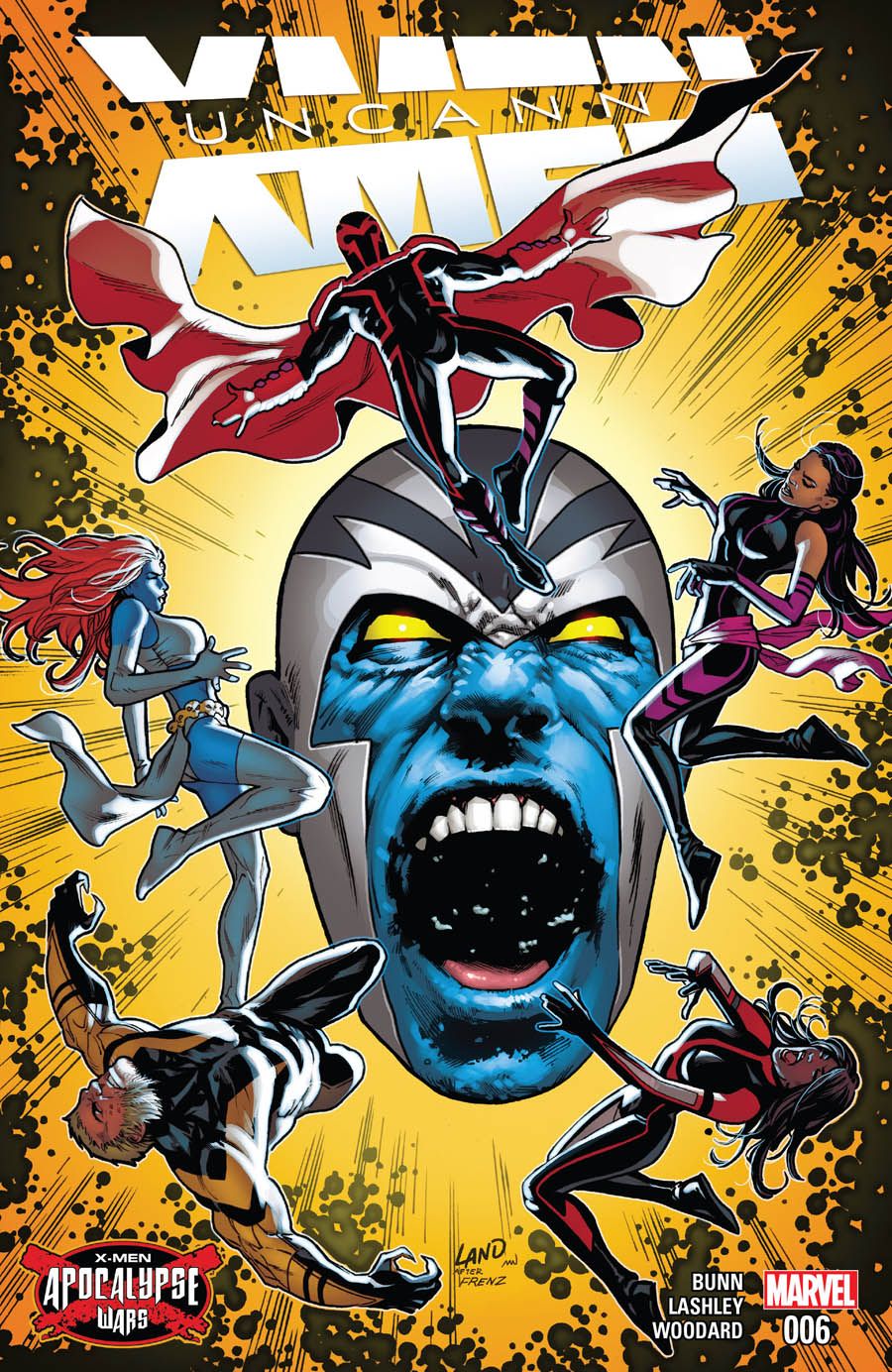"Uncanny X-Men" #6 kicks off this series' second story arc, which is also part of the "Apocalypse Wars" crossover event. However, what should be a comic with the potential to pull in lots of new readers and make them desperate for more comes across as missing a bit of a spark thanks to an overabundance of backstory and setup for future issues.
Cullen Bunn and Ken Lashley's main story is the Apocalypse-connected story, and the duo walk us through the history of Archangel and how he was corrupted and influenced by the former super-villain. Bunn gives us a bit of insight about why he's in his Archangel form again and why he lacks any sort of self-awareness, even as there are hints that something is stirring in the back of Archangel's brain. While Psylocke and Magneto examin a lead connected to that, Sabretooth and M are in the Morlock tunnels (where Angel first lost his wings) and discover an unpleasant truth about the mutants who once more live within them.
The problem is that neither of these threads are very interesting. The main plot involving Archangel is so full of exposition that -- by the time we get to the cliffhanger -- it's too little too late. In many ways, this issue is the antithesis of "show, don't tell." The Morlock tunnel storyline has many similar problems; there's a lot of Sabretooth and Monet discussing how they're dealing with one another (rather than just showing us), and the tussle with Callisto feels like a fight for the sake of having a fight. Considering that the Morlocks have seemed to exist solely to be killed off again and again ever since the infamous "Mutant Massacre" storyline, a panicked revelation that the Morlocks are dying once more is hardly a show-stopping moment.
Lashley's art feels much more angular than I remember it, but that works to his advantage when it comes to the big double-page spreads involving Archangel. Both of those stand out because of how well all of the figures work together on the page; he gives the reader the sense of many bodies without losing track of any of them. Psylocke and Monet both look very severe under Lashley's pen, to the point that Monet is only recognizable due to her bodysuit and skin color. Still, when it comes to a messianic incarnation of Angel, Lashley is clearly the one to call.
The backup story finds Magneto and Xorn having a discussion, interspersed with appearances from a news program talking about mutants and Magneto's sinking of Genosha. While it's nice for there to be a follow-up on both Xorn's earlier appearance in this series as well as something as shattering (and implausible) as Magneto sinking an island nation using explosives, events are again told rather than shown. Magneto's snarled reasoning on how he needs to get others as angry as himself feels very forced here, lacking the subtlety Bunn brought to other works like "The Sixth Gun." Paco Medina and Juan Vlasco's art starts out as very smooth and slick, but the final page presents a rough-looking Magneto that lacks the appeal of the earlier scenes, where he and Xorn walked through the snow in Tibet. Still, I'd welcome more Medina on this title; his work on the 2010 "X-Men" series is probably forgotten these days but was the high point of the title.
The remaining chapters of "Apocalypse Wars" in "Uncanny X-Men" may turn out to be a lot of fun, but this first issue is just too slow. There's still time to turn things around, but -- for the moment -- the sluggish, overly expository nature of this comic keeps it from engaging with readers the way an opening chapter should.

